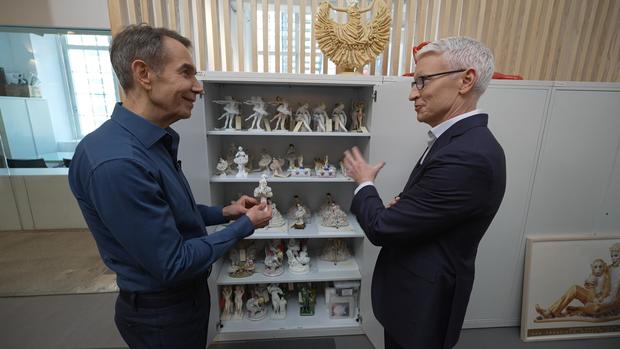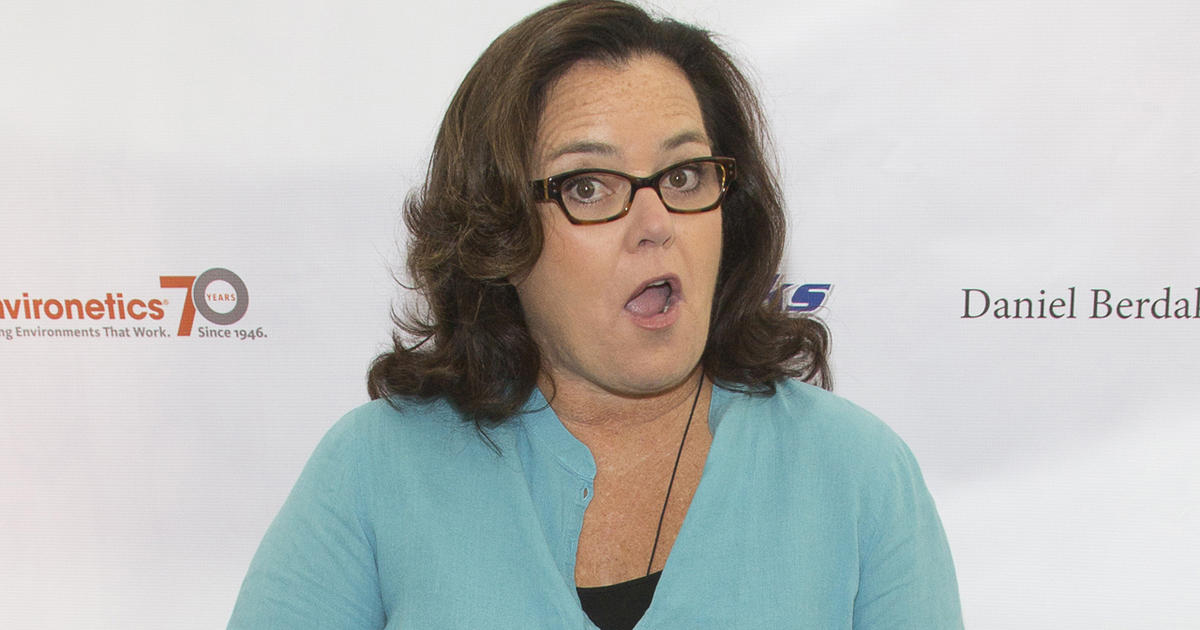Jeff Koons explains role of technology in creating his art
Jeff Koons is one of the most popular and polarizing artists in the world. In over four decades as a professional artist, Koons has reached a level of commercial success that few painters and sculptors could ever imagine. His works have become iconic: In 2019, one of his most recognizable sculptures, a stainless steel inflatable rabbit, resold for $91 million. It set a record for the highest price ever paid at auction for a work by a living artist.
He is known to take famous characters or artworks and play with them – like the Incredible Hulk and the Mona Lisa. He likes to elevate everyday objects, making them larger, shinier or surreal versions of themselves. He says his work is inspired by memories from his childhood. He grew up in a rural community near York, Pennsylvania and as a child remembers being mesmerized by the porcelain and ceramic figurines that his grandparents owned. Today, Koons has collected hundreds of similar figurines, buying them on eBay and other online auctions and has used them as inspiration for some of his work.
Koons spent 12 years turning one of those figurines, a $150 porcelain ballerina, into a multimillion-dollar, 8-foot-tall marble sculpture. He let Anderson Cooper in on the process of making the sculpture, which he calls "Pink Ballerina."
Koons began by putting the figurine into a CAT scan machine to digitally map every detail, inside and out. It then took five years to figure out how to translate all the data from the scans into instructions for machines to carve the marble. That process was so complicated that Koons consulted with scientists at MIT's Center for Bits and Atoms. The actual machining took the next seven years to complete, even with the milling machines running as close to 24/7 as possible.
The artist took Cooper to a stone workshop in Pennsylvania to check on the progress. The ballerina was still being hand polished. Ayami Aoyama, the head of Koons' hand finishing department, said that 33,000 hours of handwork had already been put into creating the sculpture.
Extraordinary commitment to a work of art is nothing new for Koons. He once spent 20 years figuring out how to make a mass of aluminum look exactly like a 10-foot-tall pile of Play-Doh.
Koons met Cooper at The Broad, a museum in Los Angeles, which has the largest collection of his artwork, and showed the correspondent one of his other most famous sculptures, a 10-foot-tall balloon dog. "Balloon Dog" looks like it's filled with air, but it's made of stainless steel and weighs over a ton.
"We had to make machines to make this work. They didn't exist," Koons said.
Koons has always pushed the boundaries of technology. He once enlisted the help of Richard P. Feynman, a Nobel Prize winning physicist, to create a series of basketballs that float in tanks of water but appear as though they are suspended in air. For another project, he used more than 60,000 living flowers to create a 40-foot sculpture of a puppy. To keep the flowers alive, he created an internal irrigation system.
The series that first got Koons noticed in 1980 was called "The New." It initially featured about 20 brand-new vacuums displayed in cases with fluorescent lights.
"I was showing them for their newness, that this was a brand-new object, it was never used, never turned on," Koons explained. "You can see that it's clean, it's pristine, its lungs are pure, you know? And there's also some sensual aspects to it, too."
But Koons doesn't do the sculpting or much of the painting himself. He comes up with the ideas and sets the standards but has artisans that do the labor. His studio resembles an art factory, with painters meticulously mixing thousands of colors and following his instructions. There are also dozens of digital assistants and sculptors as well as craftsmen all over the world helping him make his complex pieces.
This approach has led to criticism, including from the late 60 Minutes correspondent Morley Safer. Thirty years ago, Safer did a story critiquing contemporary art and likened Koons to a P.T. Barnum selling to suckers.
"He doesn't actually paint or sculpt, he commissions craftsmen to do that or he goes shopping for basketballs and vacuum cleaners," Safer said at the time.
Koons defended his process.
"I've designed, worked on the systems, so that the whole process at the end of the day it's as if every mark was made by myself," he said.
Later this year, Koons hopes to launch his artwork to the moon on board a SpaceX rocket. The project, called "Moon Phases," consists of 125 small, stainless steel sculptures depicting the different shadows of the moon that have been placed inside a protective case and mounted on the side of a lunar lander. If all goes according to plan, it will become a permanent art exhibition on the moon. It posed new challenges, even for Koons. For starters, there's the extreme vibration of space travel and the dramatic temperature changes on the surface of the moon.
"[It's] one of the most inhospitable environments that, you know, you could imagine for a work of art," Koons said.
The sculptures that are going to the moon are for sale, along with an NFT, or non-fungible token, that will serve as digital proof that the artwork is actually up there. There are also 125 larger moon sculptures that will stay on the Earth. Koons won't say how much he'll charge, but there's a good chance the price tag will be out of this world.
Editor's note: About 10 years ago, Anderson Cooper bought a work by Jeff Koons at a charity auction.





